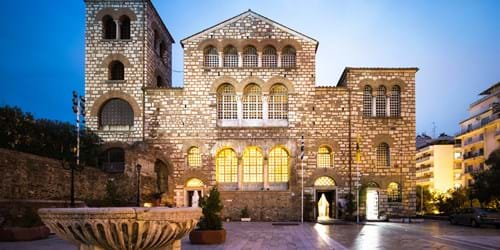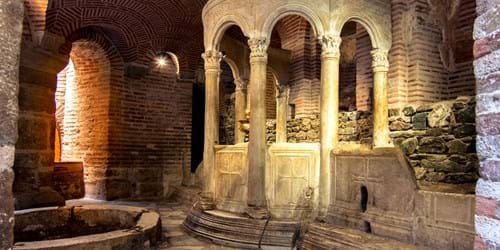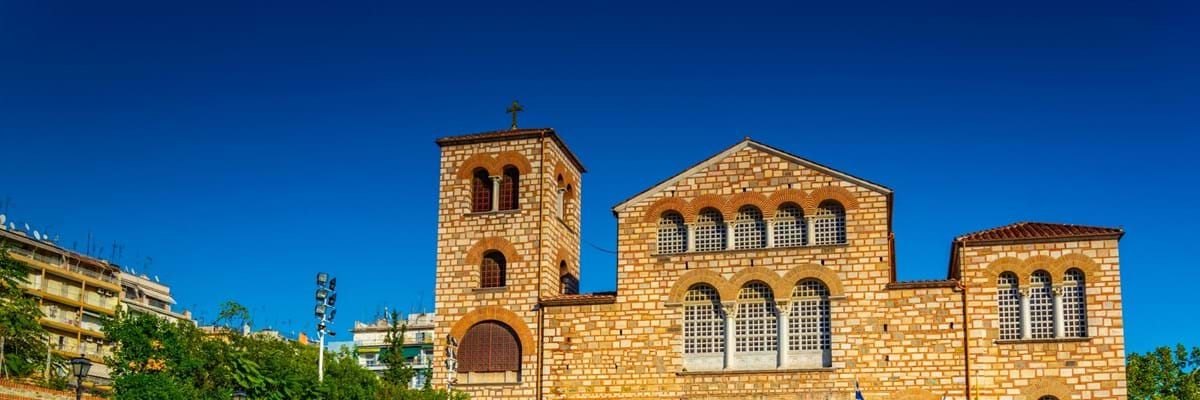How about these three reasons for visiting the Church of Saint Demetrios. An heroic story from the days of Romans slaughtering Christians; a crypt where a murdered saint performed miracles; treasures from a troubled past. Let’s start at …
The Beginning
Demetrios was born in Thessaloniki when the Roman rulers persecuted Christians. This son of a military commander joined the army but was secretly baptized. He refused an order to kill Christians and was thrown into prison where he was tortured, killed and buried in about 305AD. Before he died he left his wealth to the poor. Not long after Demetrios’s death the Romans did a U-turn. Christianity became an accepted religion and the worship of idols and gods was supposedly stopped.

The Church
At first, a small church was built on the site of Demetrios’s grave and began to attract pilgrims. It was said that “holy myrrh” from his remains was responsible for miraculous cures of diseases. Thousands flocked there. About a century later a bigger church was built, only to burn down after a couple of centuries and be replaced about 1,400 years ago. After the Ottoman conquest of Thessaloniki in 1430 the church became a mosque. Then on October 26, 1912, Thessaloniki was liberated when the Greek Army drove out the Turks. That, coincidentally, is the date of St Demetrios’s feast day. Grateful Thessaloniki made Demetrios patron saint of the city. Every October 26 is still a day of processions, services and parties. The church, a five-aisled basilica full of graceful arches and beautifully restored mosaics and icons, is considered a fine example of Byzantine religious architecture. It was badly damaged by fire in 1917 but restored on the original plans. It includes a shrine to the saint.

The Crypt
The fire led to the re-discovery of 7th century mosaics and the crypt on the spot where Demetrios was said have been killed. Over the centuries of the Ottoman occupation the crypt became filled with soil and was abandoned and forgotten.
It is believed that the crypt was once part of a network of underground tunnels running between numerous ancient sites. It is now an atmospheric museum and exhibition area with artefacts that include articles from the original 5th century church.
Date last updated:



